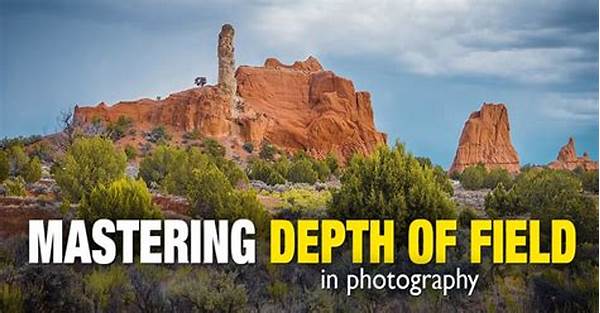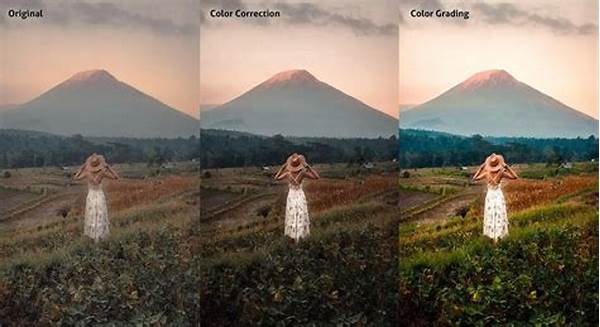Hey there, fellow photography enthusiasts! So, you’re diving into the world of depth of field, huh? Let me tell you, mastering depth of field control is like unlocking a new level in your photography game. It’s that magical touch that adds dimension and life to your photos. Whether it’s blurring out those unsightly backgrounds or making sure everything is sharp as a tack, getting the hang of it is absolutely worth your time. Grab your camera, and let’s dive in!
Read Now : Stunning Natural Settings For Photo Shoots
Understanding Depth of Field
When it comes to photography, depth of field (DoF) is a term you’re going to hear a lot. Essentially, it’s all about how much of your photo is in sharp focus. Whether you’re shooting portraits with those dreamy, blurred backgrounds or breathtaking landscapes where everything is in focus, mastering depth of field control is key to achieving your vision. DoF is influenced by various factors such as aperture, focal length, and distance from the subject. By understanding and manipulating these elements, you’ll be able to control which parts of your image are sharp and what parts get that lovely blur. Trust me, mastering depth of field control is one of those skills that can elevate your photography from good to phenomenal. So, let’s explore this aspect and take a step towards creating those picture-perfect shots!
Tips for Depth of Field Control
1. Lens Aperture: Use wide apertures for shallow DoF and narrow for deep DoF.
2. Focal Length: Longer lenses can compress perspective and help blur backgrounds.
3. Distance to Subject: The closer you are, the shallower the DoF.
4. Sensor Size: Larger sensors offer more control over DoF.
5. Experiment: Practice with different settings to see what works for you while mastering depth of field control.
Practical Applications
Mastering depth of field control isn’t just for the pros—anyone can get the hang of it with a bit of practice. Whether you’re snapping portraits or capturing majestic landscapes, controlling your DoF can dramatically change the outcome. For portrait shots, use a wide aperture to blur the background and make your subject pop. Those dreamy eyes and subtle background nuances can truly set a mood. On the other hand, landscapes often benefit from a deep DoF to ensure each element of your frame is crystal clear.
Now, let’s not forget macro photography—where depth of field is your best friend. You’re trying to capture all those tiny details up close while still maintaining some artistic blur. The challenge here lies in balancing the aperture, distance, and focal length. Remember, mastering depth of field control is a journey. It’s about trying new things, making mistakes, and learning from them. So, charge your batteries and start clicking away.
Steps to Master Depth of Field
1. Start Simple: Begin by experimenting with your camera settings in various environments.
2. Analyze Results: Review your shots and note what settings create your desired DoF.
3. Use Natural Light: Lighting can enhance or detract from your DoF effects.
4. Invest in a Prime Lens: These often have larger apertures, which are great for DoF control.
5. Read and Watch Tutorials: Supplement your practice with knowledge from experts.
Read Now : Real-time Image Watermarking Solutions
6. Join Photography Groups: Networking can provide new ideas and feedback.
7. Experiment with Angles: How you position yourself in relation to the subject can change the DoF.
8. Focus Points: Learn to select focus points manually for precision.
9. Tripod & Remote Release: Reduce camera shake for sharper images, essential for effective DoF.
10. Patience and Practice: Mastering depth of field control takes time and lots of practice.
The Challenges of Depth of Field
Mastering depth of field control might seem daunting at first, but don’t worry—we all start somewhere. One common challenge is that balancing aperture, focal length, and distance can sometimes be a juggling act. You might nail the background blur for a portrait, only to find that you’ve missed the focus on your subject’s eyes. It has happened to the best of us, so don’t be discouraged.
A tip is to shoot in manual mode as much as possible. It gives you more control over each element that influences the depth of field. Sure, autofocus can be your friend, but mastering depth of field control is all about knowing what you want before you take the shot. It’s about making those snap decisions on whether you need more blur or more focus, and adjusting your settings to match that vision. Keep shooting and experimenting—you’ll create a masterpiece in no time!
Getting Creative with Depth of Field
Let’s talk creativity—because mastering depth of field control isn’t just about technicality; it’s about adding flair to your images. Love those Instagram-worthy shots with sharp foreground subjects and gorgeously blurred backgrounds? All about that depth of field life! Mastering this aspect allows you to bring a professional touch to even the simplest of compositions.
Depth of field can also help you tell a more compelling story with your images. By choosing where to focus, you guide your viewer’s eye, emphasizing the elements of the scene that are most meaningful. This becomes particularly useful in storytelling through images, as the depth of field control can highlight the emotional and thematic core of your frame. Keep playing around with settings, compositions, and subjects—before you know it, mastering depth of field control will be second nature, and your photos will stand out from the crowd.
Summary of Mastering Depth of Field Control
Mastering depth of field control is an exciting and rewarding part of photography that can transform your work. By understanding how aperture, focal length, and distance come into play, you can take photos that not only look professional but also capture the essence of the moment. Whether you’re shooting close-ups with creamy bokeh or wide scenes with every detail in focus, the depth of field is a tool that helps you express your vision.
In your journey of mastering depth of field control, patience and practice are your best allies. Don’t worry if you don’t get that perfect shot right away; every photo taken is a lesson learned. Embrace the process, let your creativity lead the way, and don’t shy away from experimenting. With time and effort, you’ll find that controlling the depth of field becomes a natural extension of your artistic expression, allowing your work to shine vividly and uniquely. So go out there and keep clicking—you’ve got this!



